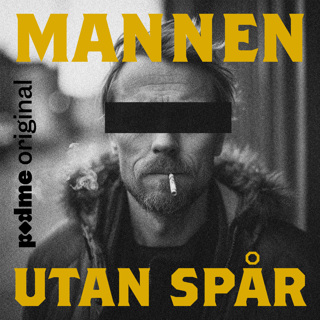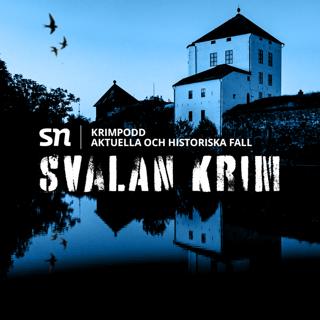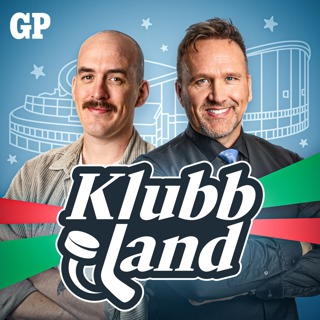
Fashion Trends in 2025: Navigating Uncertainties and Consumer Shifts
FASHION INDUSTRY UPDATE: MAY 2025The fashion industry continues to navigate significant challenges in early May 2025, with several key developments emerging in the past 48 hours.Luxury brands are increasingly pivoting toward the often-overlooked "silver generation" of consumers over 50 years old, recognizing their growing proportion of fashion spending. This strategic shift comes as younger consumer markets show signs of saturation.Supply chain reconfiguration remains a top priority as geopolitical tensions affect global trade. Major retailers are accelerating nearshoring initiatives and prioritizing manufacturing in politically aligned countries to mitigate disruption risks. Just yesterday, several major fashion houses announced new production facilities in Mexico and Eastern Europe.Sustainability continues to dominate industry conversations. Recent data indicates 67% of consumers now consider sustainable materials an important purchasing factor. However, brands are struggling with the tension between environmental commitments and profit margins, especially as regulatory bodies intensify scrutiny of greenwashing practices.In the sportswear category, challenger brands are rapidly capturing market share from established players. These smaller, more agile companies are demonstrating superior innovation capabilities unburdened by traditional business models.Inventory management has become critical as brands work to reduce waste while avoiding shortfalls. New AI-driven forecasting technologies are being deployed across the sector to maintain optimal stock levels.The US fashion market has emerged as a surprising bright spot despite ongoing tariff uncertainties, with apparel sales showing resilience compared to other retail categories.As we move further into 2025, industry experts emphasize that success will depend on brands' ability to respond decisively to uncertainty, with Matthew Katz of SSA & Company advising companies to "invest in your strengths, understand your consumers better than ever, and act with purpose."This content was created in partnership and with the help of Artificial Intelligence AI
1 Maj 2min

Fashion's Rapid Evolve: Prada's Versace Acquisition, Collaborations, and Sustainability Shift
In the last 48 hours, the fashion industry has been defined by rapid adaptation, major deals, and a wave of new collaborations reshaping both luxury and mainstream markets. The most significant headline is Prada’s acquisition of Versace in a €1.25 billion deal finalized this month, consolidating two Italian powerhouses and marking a strategic move to fortify Prada’s position in the global luxury sphere. Dario Vitale’s appointment as Versace’s creative director following Donatella Versace’s departure signals a new creative direction, with the industry watching closely for forthcoming collections and changes in brand identity. Simultaneously, Middle West Partners’ acquisition of a majority stake in David Webb aims to accelerate growth and expand this historic jewelry house’s reach, further diversifying the luxury retail landscape over the coming year.Brand collaborations remain a central force. Louis Vuitton has reignited its partnership with artist Takashi Murakami, updating the iconic 2003 collection with bold, anime-inspired designs aimed at attracting younger luxury consumers. Balenciaga and Under Armour have merged high fashion with sports technology, reflecting a rising demand for innovative, versatile apparel. The Nike x Skims collection, debuting this spring, exemplifies the trend towards inclusive sizing and body positivity, with advanced performance fabrics tailored for comfort. The Apple x Hermès partnership continues to blend wearable tech with luxury, unveiling exclusive new Apple Watch bands that reinforce the synergy between technology and high-end fashion.On the pricing front, limited-edition collaborations have seen remarkable secondary market growth. For example, the Nike x Tiffany collection surged 195 percent in resale price, while Diesel x Savage x Fenty achieved a 97 percent jump, although with less overall market traction. These figures underscore sustained consumer appetite for exclusivity and collectible products.Sustainability and circularity also took center stage at the Change Now 2025 trade fair, where LVMH led initiatives to drive circular fashion by engaging suppliers and partners. This focus on responsible production reflects shifting consumer priorities toward eco-conscious brands and transparency.Overall, compared to previous reporting, this week’s developments highlight a greater emphasis on agility, cross-industry innovation, and adaptive strategies to navigate evolving consumer expectations, price sensitivity, and global market uncertainty. Industry leaders are responding with bold investments, inclusivity, and a greater commitment to sustainability, aiming to secure continued growth and relevance in a rapidly changing landscape.This content was created in partnership and with the help of Artificial Intelligence AI
29 Apr 3min

Fashion Forward: Prada Acquires Versace, Sustainable Collabs, and Industry Trends
FASHION INDUSTRY UPDATE: PAST 48 HOURSIn a major industry development, Prada has officially acquired Versace for approximately AUD $2.2 billion, bringing the brand back under Italian ownership after being part of US-based Capri Holdings since 2018. Donatella Versace, who recently stepped down as creative director after nearly 30 years, will remain as chief brand ambassador while Dario Vitale becomes the first non-family member to lead the iconic fashion house[1].Sustainability continues to gain momentum with Byron Bay's St. Agni collaborating with Queensland-based Outland Denim on a capsule collection for Earth Month. The partnership showcases how purpose-driven brands can create minimalist, elevated essentials using low-impact materials[1].In product launches, Louis Vuitton is introducing the LV Sneakerina, an innovative hybrid between sneaker and ballet flat available from April 11. The new silhouette will be offered in multiple colorways including fuchsia, forest green, beige, black, white, pink, blue, and silver[2].On the luxury jewelry front, Van Cleef & Arpels has brought "The Art of Movement" exhibition to Sydney's Watersedge at Campbell's Stores, running from April 11 to May 8. The showcase features over 100 jewels from the brand's patrimonial collection alongside archival sketches[2].Current market sentiment remains cautious, with 84 percent of industry leaders expecting market conditions to decline or remain stagnant in 2023 according to the BoF-McKinsey State of Fashion survey[5].Bangladesh continues its transformation in the global fashion landscape, now positioning itself as a leader in ethical fashion production according to industry consultant Taiwo Meghoma[3].These developments reflect an industry balancing innovation and sustainability while navigating economic uncertainty, with brands focusing on distinctive products and meaningful collaborations to maintain consumer engagement.This content was created in partnership and with the help of Artificial Intelligence AI
28 Apr 2min

Fashion Industry Navigates Volatility: Sustainable Sourcing, Supply Chain Resilience, and New Revenue Streams
In the past 48 hours, the global fashion industry has shown both resilience and adaptation as it navigates ongoing economic pressure, supply chain disruptions, and changing consumer dynamics. One of the most notable developments came from the Functional Fabric Fair Spring 2025 in Portland, which saw a 9 percent rise in attendance and a 30 percent expansion in exhibition space compared to the previous year. This growth reflects the heightened importance of strong supplier relationships and sustainable sourcing as brands look to secure reliable partners for future collections amid persistent supply chain volatility. Major players like Adidas, Patagonia, REI, and Nike were among the 320 brands seeking solutions to ensure supply chain resilience and responsible product development. Brands are increasingly prioritizing partnerships with vetted, sustainable-certified suppliers, as meeting consumer demand for both performance and environmental responsibility has become critical.On the business front, recent days have seen significant market activity. Bershka, part of the Inditex group, expanded into Sweden, marking a swift 40 day market entry that signals ongoing retailer confidence in physical store openings when justified by strategy and local demand. Meanwhile, in the United States, new tariffs on imported goods are squeezing margins for both luxury and fast fashion players, prompting many to look at the resale market as both a buffer for declining demand and a source of new revenue streams.Investor sentiment has shown volatility as well. Shares in luxury group Puig fell sharply after the company withdrew certain batches of Charlotte Tilbury setting spray, highlighting the immediacy with which product safety or recall issues can impact market value. Regulatory shifts also continue to affect brand positioning. Uniqlo and other major retailers face consumer boycotts and pressure over their sourcing practices, particularly regarding Xinjiang cotton, underscoring the critical importance of transparent, ethically sound supply chains.In summary, current market conditions reveal a fashion industry intensely focused on sustainable sourcing, supply chain stability, and new market opportunities despite external pressures. Compared to even a month ago, leading brands are doubling down on supplier partnerships, sustainable sourcing, and risk mitigation strategies. These efforts position them to better meet consistent consumer demand for both innovation and social responsibility while weathering ongoing economic uncertainty.This content was created in partnership and with the help of Artificial Intelligence AI
23 Apr 2min

Fashion's Versatile Luxury: Sneakers, Collaborations, and Experiential Retail
The global fashion industry in the past 48 hours has shown strong momentum, driven by major product launches, strategic partnerships, and dynamic consumer engagement. A notable highlight is Louis Vuitton’s introduction of the LV Sneakerina, blending sneaker comfort with ballet flat elegance, now available in various colors and signaling a push towards versatile, practical luxury footwear. This launch exemplifies how leading brands are targeting everyday wear while maintaining signature aesthetics.Jewelry also remains at the forefront, with Van Cleef and Arpels opening The Art of Movement exhibition in Sydney, displaying over 100 heritage pieces and exploring themes of movement and design inspiration. Such brand-driven events are amplifying consumer interest and showcasing resilience in high-end categories.Recent weeks have seen a wave of collaborations. STAUD partnered with St. Regis to develop resort-focused accessories, marking an entry into luxury hospitality and signaling that cross-industry partnerships are expanding brand reach. Cheap Monday’s collaborative capsule with Landon Barker is another example, directly engaging Gen Z with stylized, celebrity-backed collections. These moves reflect a broader trend of brands leveraging partnerships to attract younger consumers and diversify their portfolios.Seasonal campaigns are also in full swing, with Burberry’s “Wish You Were Here” summer collection aligning with the shift in consumer mood toward seasonal and outdoor leisurewear. Meanwhile, immersive marketing such as Miss Dior’s pop-up at Changi Airport and Lancôme’s Rose Ice-Hotel at Incheon are capturing travelers’ attention, driving in-person brand experience despite ongoing global travel fluctuations.From a market movement perspective, there have been no significant regulatory changes or major supply chain disruptions reported in the last week. Instead, brands appear to be doubling down on creative activations and new product lines. The emphasis on limited-edition drops and experiential campaigns marks a shift from the cautious market tone seen in early 2024 when global luxury spending was subdued.Consumer behavior continues its post-pandemic evolution: demand for transitional wardrobe essentials and brands that offer versatile, innovative products is accelerating. As a result, industry leaders are prioritizing agility, exclusivity, and cross-cultural partnerships to stay ahead in a highly competitive and rapidly changing market.This content was created in partnership and with the help of Artificial Intelligence AI
22 Apr 2min

Fashion Industry Adapts: Luxury Brands Innovate, Sustainability Surges, and Consumers Seek Value
The global fashion industry has witnessed a series of significant developments in the past 48 hours, underscoring both ongoing challenges and dynamic innovation. One of the headline deals is Coach securing a multi-year partnership as the official handbag partner of the WNBA. This collaboration is designed to integrate luxury branding into major league events and spotlight rising talent, strengthening Coachs foothold in the sports-lifestyle segment.Luxury fashion overall is facing headwinds, with a noticeable downturn attributed to the end of tax-free shopping in the UK, new US tariffs on European imports, and economic slowdowns in both China and the US. These shifts have led to steep price increases across premium brands. As a result, many consumers have begun gravitating toward resale markets and emerging e-commerce platforms, citing not only cost concerns but also a growing awareness of unethical manufacturing practices.Supply chain developments have spurred a resurgence in British fashion manufacturing. Inquiries for sourcing from UK factories have climbed 35 percent as global supply chains adapt and new sustainability laws encourage local production. Government incentives are helping small and medium-sized brands modernize operations and invest in energy-efficient technologies.On the product front, April has brought a wave of high-profile launches. Christian Louboutin debuted its first eyewear line, blending signature shoe design elements into bold accessories. Havaianas, in partnership with Gigi Hadid, is reviving flip-flops as fashionable streetwear, while Stussy’s Spring 25 Collection and notable collaborations like Crocs x Juicy Couture and H and M x Magda Butrym demonstrate a strong appetite for both comfort and creative design. Sneaker innovation also remains strong with Nike launching models like the Air Force 1 Low Blue Suede and the advanced Vomero 18.Major leadership shakeups continue with creative directors shifting at Gucci, Versace, and Loewe, signaling that established brands are seeking fresh artistic direction. Compared to previous months, the industry in April 2025 is responding to economic turbulence by doubling down on innovation, sustainability, and collaborative launches while recalibrating to meet the shifting priorities of increasingly value-conscious and ethically minded consumers.This content was created in partnership and with the help of Artificial Intelligence AI
21 Apr 2min

Fashion's Resilience: Navigating Headwinds and Seizing Opportunities in a Volatile Industry
The global fashion industry is experiencing cautious optimism mixed with ongoing headwinds over the past 48 hours. Market leaders and analysts report sluggish revenue growth expected to stay in the low single digits this year, reflecting a continuation of 2024’s softness. While luxury brands like Brunello Cucinelli and Moncler confirmed growth targets of around 10 percent and reported stronger-than-expected revenue due to resilient Asian demand, the broader market faces uncertainty as only 20 percent of industry leaders anticipate improved consumer sentiment in 2025, while 39 percent expect conditions to worsen.Recent product launches signal brands are betting on innovation and partnerships to drive attention. Christian Louboutin debuted its first eyewear line, expanding beyond footwear. Louis Vuitton launched the hybrid Sneakerina shoe, while Ray-Ban released its Blacked Out collection under new creative director A$AP Rocky. Collaborations remain a key driver: the BMW x Louis Vuitton partnership led resale value surges of over 780 percent, and Gucci continues to make headlines with new leadership from Demna.Retail expansion is also notable, with Ralph Lauren opening new boutiques in Australia, and Tiffany & Co. unveiling its largest European flagship in Milan. Despite this, some US and European retailers are delaying orders and freezing hiring as protectionist trade policies, especially renewed US tariffs, cause uncertainty and price pressures. Chinese fast-fashion giants Shein and Temu are reportedly hiking prices to offset tariff impacts.Consumer behavior is increasingly shaped by inflation fatigue, value-seeking, and a heightened demand for sustainability and ethical sourcing. Shoppers, particularly Millennials and Gen Z, expect transparency and eco-friendly initiatives. Brands are responding with waste-reduction programs and circular fashion efforts, as evidenced by a reported 44 percent of younger consumers prioritizing environmental impact in their purchases.Supply chain disruptions persist, driving a shift to nearshoring and regionalization for agility and risk reduction. Technology, particularly AI, is helping brands optimize design, forecasting, and inventory under these constraints. Regulation and advocacy are intensifying, with PETA pressuring luxury houses like LVMH on animal welfare and governments introducing stricter emissions and labor rules.Compared to previous months, the industry has moved from hope for post-pandemic recovery to a pragmatic focus on resilience, operational discipline, and creative adaptation in design, sustainability, and digital marketing. Leaders adopting these strategies are best positioned to weather ongoing volatility and seize new opportunities.This content was created in partnership and with the help of Artificial Intelligence AI
17 Apr 3min

Fashion's New Normal: Resilience, Sustainability, and Strategic Collaborations
The global fashion industry has seen notable developments over the past 48 hours, underscoring both ongoing challenges and emerging opportunities. Leading brands have announced major product launches and strategic partnerships, while economic pressures and evolving consumer preferences continue to shape the market landscape.Christian Louboutin has stepped into the eyewear segment for the first time, unveiling a collection inspired by the brand’s famous footwear aesthetics and pricing new sunglasses up to $875. This move aligns with other luxury brands diversifying their portfolios and seeking growth in adjacent categories. Similarly, Louis Vuitton launched the Sneakerina, a hybrid between sneakers and ballet flats, reflecting a wider industry focus on versatility and everyday luxury. Ralph Lauren further expanded its retail footprint with a new boutique, enhancing its presence in Australia and underscoring a push toward international markets[2][5].Sustainability and innovation remain central themes. This week, The LYCRA Company showcased a bio-derived fiber at Kingpins Amsterdam, while Unifi’s REPREVE introduced a new biodegradable textile, demonstrating a surge in eco-friendly material launches. These developments respond directly to consumer demand: 44 percent of millennials and Gen Z now consider environmental impact a primary factor in purchasing decisions[4][8]. Major trade fairs like the Functional Fabric Fair in Portland have focused on sustainable textile sourcing and supply chain innovation, signaling industry commitments to greener practices[1].Collaborations stand out as a critical driver of both sales and social buzz. The BMW x Louis Vuitton partnership achieved a resale value surge of 787 percent, reflecting consumer appetite for exclusive limited editions. On the other hand, not all collaborations perform equally, as seen with the Skims x The North Face collection experiencing a 35 percent decline in resale value[7].Economically, the industry is navigating a period of sluggish growth. McKinsey forecasts low single-digit revenue increases for 2025, with non-luxury segments expected to drive profit for the first time in over a decade. Consumer sentiment remains cautious due to persistent inflation and macroeconomic uncertainty, forcing brands to focus on efficiency, nearshoring, and supply chain resilience[6]. In summary, today’s fashion industry is characterized by innovation in products and materials, aggressive pursuit of strategic partnerships, and a pragmatic response to shifting consumer and macroeconomic realities. Compared to last year’s cautious optimism, the new normal is one of resilience and adaptability, as brands pivot to meet both sustainability expectations and economic headwinds[6][8].This content was created in partnership and with the help of Artificial Intelligence AI
16 Apr 3min





















